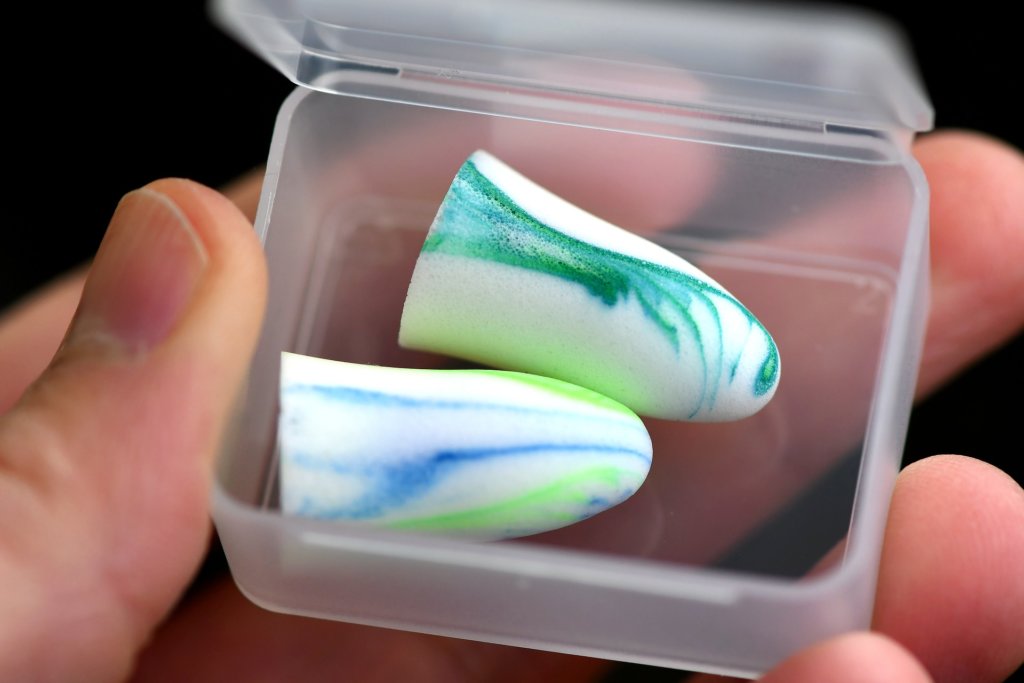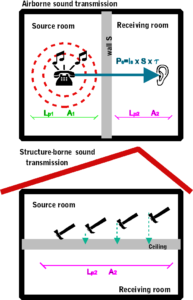Hearing Protectors

Hearing protectors are the most popular way to control hazardous noise. There are several issues related to the very essence of the protectors and the way they are chosen and used. We will examine some of the basic concepts involved and deal with their practical applications over the next few issues.
Attenuation
Hearing protectors are devices intended to reduce the noise energy that penetrates the outer ear that may present potential hazard to the hearing. Sound waves are transmitted through the air. Any obstruction to their passage reduces the energy they are carrying. Obstructing the passage-way to the tympanic membrane follows the same basic idea of noise control as when we block the passage of the noise using sound insulating materials (see Figure 1). In the last issue of CanadianAudiologist.ca we went through acoustic materials and, in particular, sound insulation. Now we will examine some of the problems and solutions of the attenuation provided by hearing protectors.
In essence, a hearing protector does the same as a wall in a house. It blocks some of the passage of sound waves from the environment into the ear canal.
As with walls, the difference between the noise levels on both sides of the hearing protector obstacle constitutes the attenuation. Attenuation is expressed in dB; however, no suffix such as dBA or dB SPL is required because it is a difference measure.
The measurement of attenuation of hearing protectors is a complex procedure that requires a specialized environment and special equipment. It is measured using between 20 – 30 subjects for regulatory procedures, each measured on three occasions, following strict procedures. That makes them quite expensive too. Of course, the attenuation can be measured on an individual in a clinic, with the hearing protection they are wearing using real ear measurement tools.
The attenuation of a hearing protector is strongly dependent on the frequency of the sound wave. In other words, it has different main values at different frequencies. For regulatory purposes, the proper way of describing a hearing protector's attenuation is by a table or graph (as in audiometry), where the attenuation is presented at the audiometric frequencies from 125 Hz through 8,000 Hz.
The value of the attenuation is of utmost importance for the use of the hearing protector since it allows for the calculation of the sound level of the protected ear when the hearing protector is worn. This helps in the selection of the device. Knowing the value of the ambient sound level, one selects a hearing protector that can reduce the sound level in the canal down to at least 85 dBA, and also lower for other frequencies of interest.
As we will see later, important as is, the attenuation is not the only property to be taken into account for the selection. There other property to be considered, among them, is comfort. Since the hearing protector is often worn for extended periods it has to be comfortable. As said by the eminent hearing conservationist Aram Glorig, "the best hearing protector is the one that is worn"; if the device is not comfortable, it is not worn and, consequently, not good!
Like insertion gain being added directly to the audiogram, the frequency-by-frequency attenuation (or "insertion loss") can be subtracted from the environmental noise level using the table or the graph of the attenuation. For non-specialists, however, the calculation can be somewhat awkward. For that reason, there is another simplified way that uses a single-number expression for the attenuation, the Noise Reduction Rating (NRR). It should be stressed that the NRR, like other single number rating schemes, can be pretty simplistic. This number is obtained from the detailed attenuation data and provides a straightforward way to calculate the sound level of the protected earl. As with all simplified calculations, using the NRR is not as precise, but its simplicity has been a decisive factor for the extent of its use. NRR of hearing protectors ranges between 10 dB and 35 dB. The higher the NRR, the higher the attenuation of a protector. But to show its simplicity, depending on the frequency, a hearing protector with an NRR of 35 dB may provide up to 40 dB for some frequencies and only 20-25 dB of attenuation for other frequencies.


